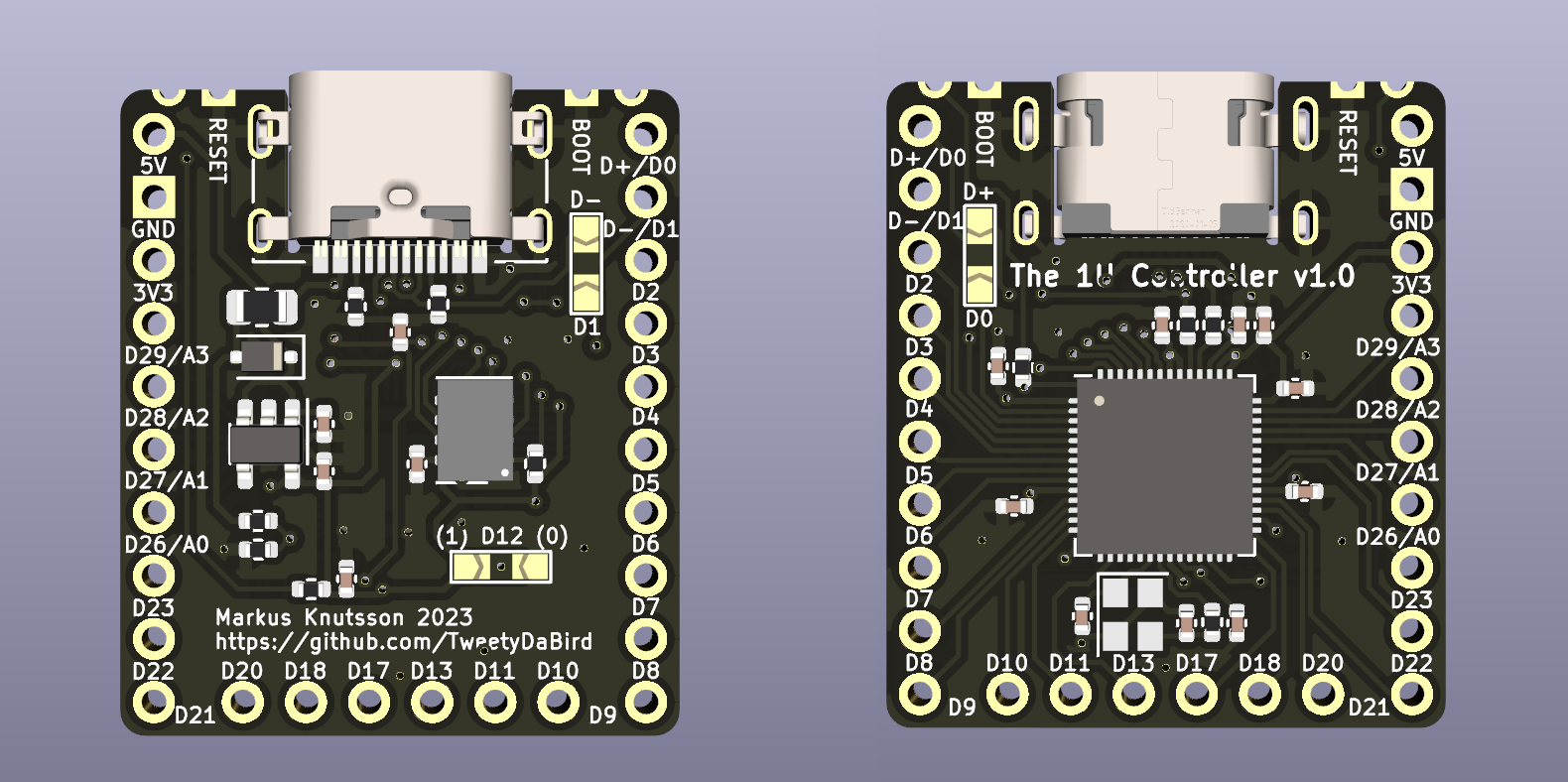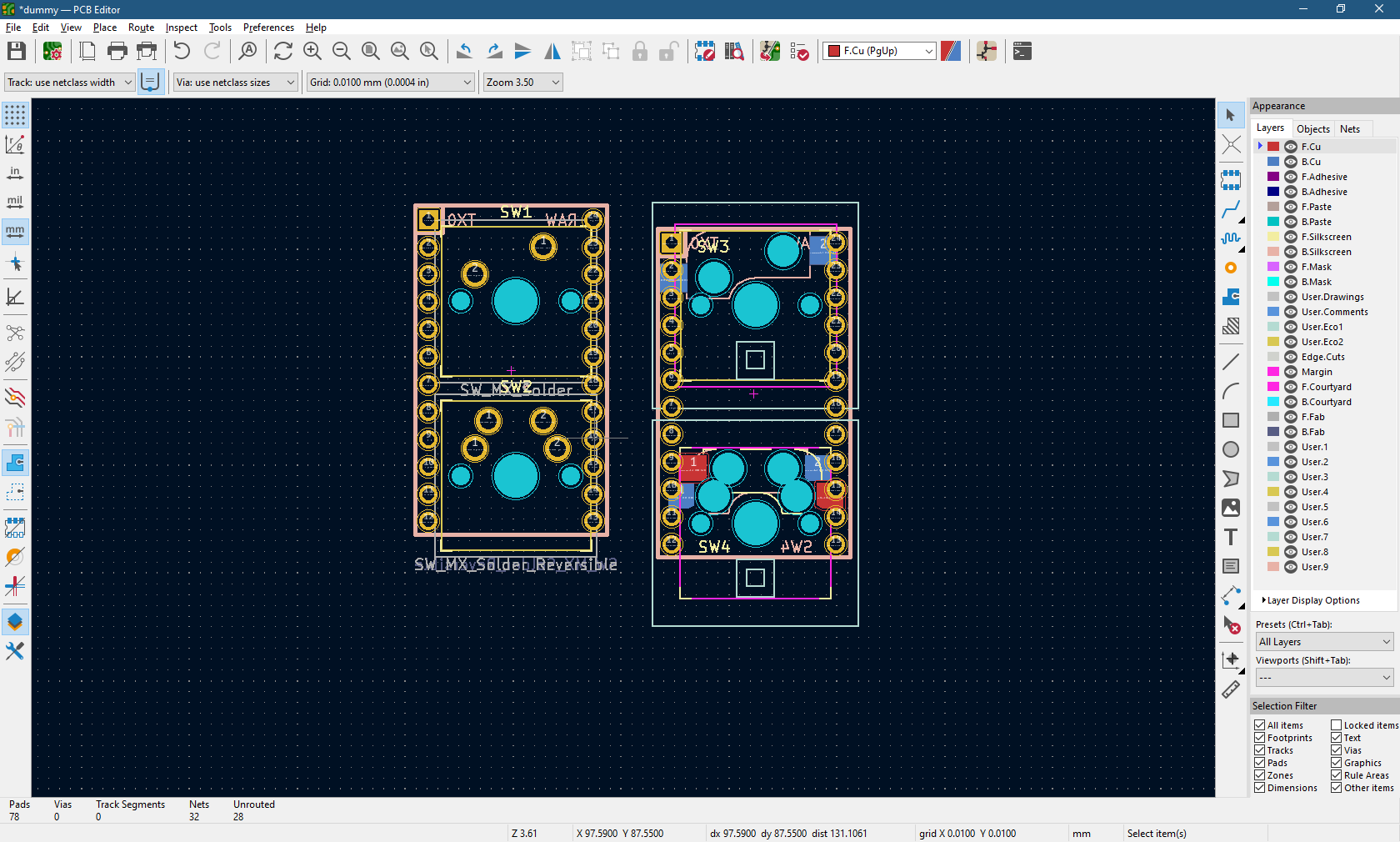Having always been somewhat annoyed I can’t simply place a Pro Micro (or for that matter any other controller) over on top of a hot-swap socket without either turning it sideways, loosing pins, or some other creative solution.
So after trying to find other smaller controllers, but always ending up with a compromise, I finally got fed up with it, and started designing one of my own that is just large enough to fit the purpose.
RP2040 powered of course, and with a mid mount USB type C, the design is extremely low profile and fairly barebones with no status LED, no buttons, etc. making it easy and cheap to produce. And with 26 pin, there are 23 IO pins available for matrix and other things. VBUS detection for easy use with split keyboards, but beyond that stripped of anything fancy.
The boot/reset signals are available as castellated connections next to the USB, and only really meant for the first flashing/emergency flashing, as the rest would be handled by tapping a keycode to enter bootloader from within QMK/ZMK.
Edit: Added D+/- as jumpered breakouts on pins, se below. Also added a pin high/low for assigning sides on a split (useful for handwiring)
any chance the D+/- lines are broken out to a couple pins?
I wasn’t planning on it since sacrifices two pins.
And seeing as the USB port is available to place by the edge very easily as you can place the controller over any key.
To explain, the USB port should end up needing only 3-5 mm edge on a sandwich case, or a hollow similar to how most pcb’s place it on a CNC/3d case.
Any particular reason beyond that? I’m open to reasonable compromises.
Btw, I can easily pull them out to a pair of pads, there is space for that.
just thinking about those designs where a case is wanted, but the position of the usb port isn’t ideal. not one of those things that I think is required to make this a great controller option, just something a lot of controllers don’t have and I’ve wanted for a bit.
I will second this request. I might not personally need this (yet) but it is a good option.
 How about this then? (No promises on signal integrity of that USB signal, we are pushing limits)
How about this then? (No promises on signal integrity of that USB signal, we are pushing limits)Just keep in mind, that placing the controller not at an edge, will likely make the USB port interfere with the next socket, it’s not really meant for that. Meaning you should probably de-solder the port then. Also, by powering through the 5V/GND pins, you negate the VBUS detection, and there simply aren’t enough pins/space to break that out as well, so it’s a compromise.
I don’t understand the issues that prompted you to develop this, can you explain them a bit more? What hot-swap connector are you using this with?
Of course making a cool new board can simply be motivated be a desire to do so 😀.

I guess an image says more than a thousand words?
If you want to put a controller on the underside of a keyboard, like the promicro, you can do it with just a standard MX or choc footprint by straddling the switch footprint. But if you swap the switch footprint with a kailh hotswap socket footprint the pads overlap with the promicro’s through holes. So to keep the promicro under the switches you’d need to rotate it or remove some of the pins from the footprint, giving you less IO. This is designed to be able to be placed over the hotswap footprint.
Thanks! The confusing thing in the original message is that, in context, hotswap socket makes you think of a hotswap socket for the microcontroller itself, not a switch.
Exactly!
Very cool. It looks like this will probably accommodate hot-swap sockets for both MX and Choc switches - correct?
It should, at least as long as we are talking about choc switches on an MX spacing, or a dual footprint design, as the pin headers are spaced for that. Otherwise there will probably be interference, or very, very close to it at least.




